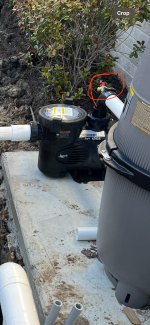what does pool not keeping pressure mean? The electrian mentioned that on 2 separate occasions in the past week as he was hooking up the panel and lights. Tile and coping was also added last week, there is no water in the pool so the comment has been confusing. I know the plumber added water to the equipment when he plumbed a month ago. I imagine whatever the issue is would be something that’s fixed since it wouldn’t pass final inspection??
They also had to cut rebar to be able to install the light, won’t this rebar cause issues with rusting and seeping through the plaster or is there a way this gets fixed? We are doing mini pebble plaster. Pic attached
View attachment 569468


